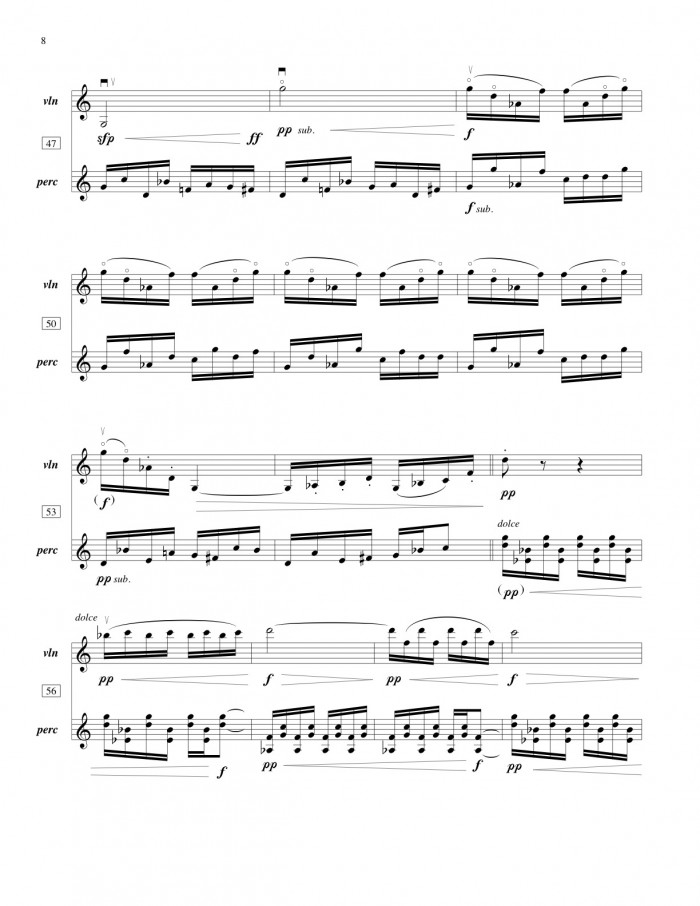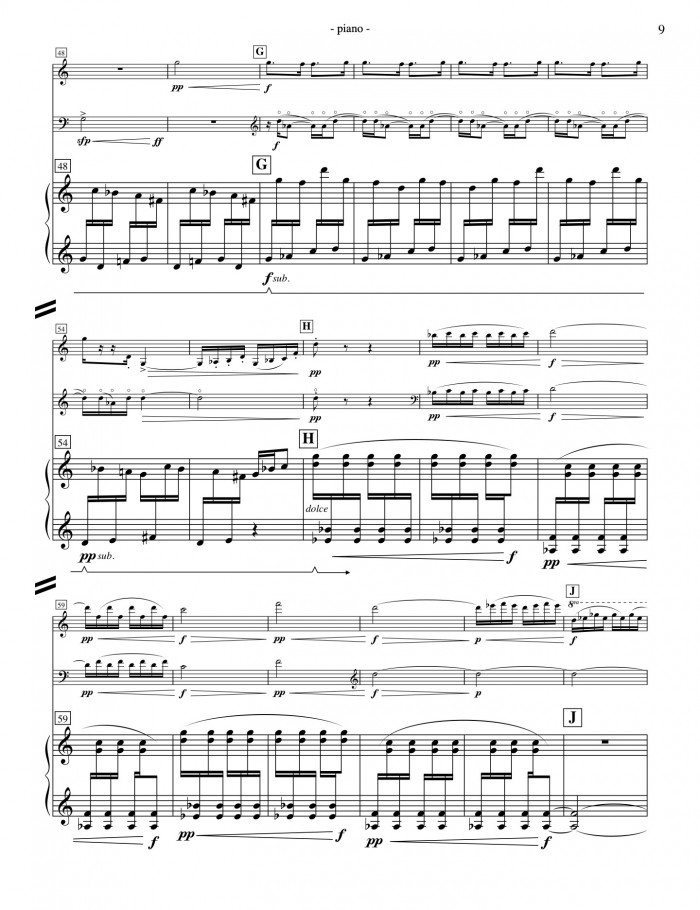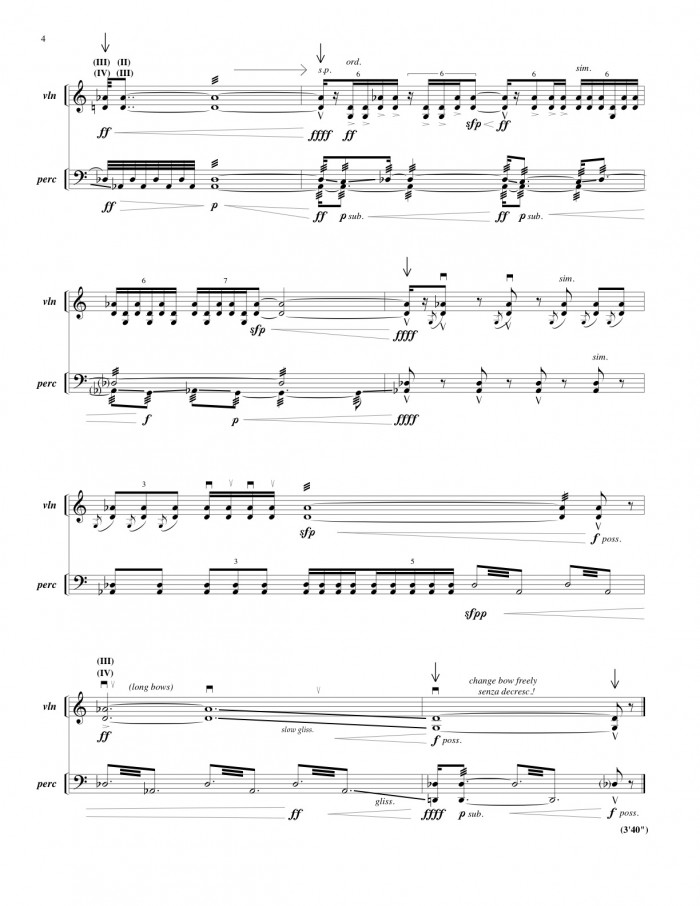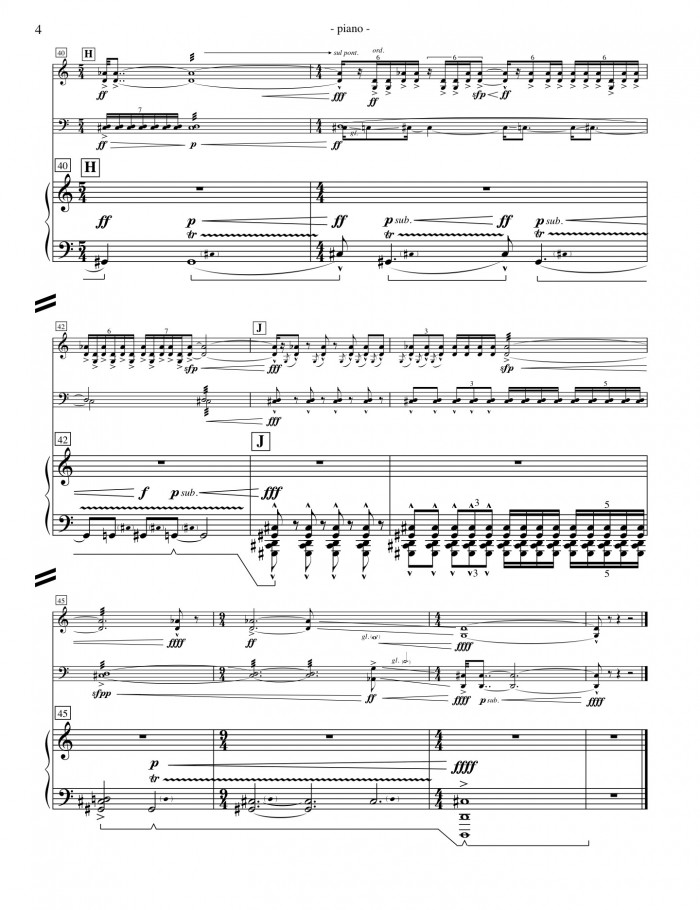“Transcription” is the task of taking a piece that is for a particular group of instruments and rewriting it for a different group of instruments. One of the things I am not as a composer is a transcriber.
 When I compose, I sit at my desk and write to the full score from the beginning. If it’s an orchestra piece, with a lot of instruments, it’s a big piece of paper — maybe 25 or 30 different instruments on one page. I don’t write the music for piano first, and then orchestrate it later. (This is one way that concert music differs from, say, pop music, which gets “composed” first and then “arranged” later.)
When I compose, I sit at my desk and write to the full score from the beginning. If it’s an orchestra piece, with a lot of instruments, it’s a big piece of paper — maybe 25 or 30 different instruments on one page. I don’t write the music for piano first, and then orchestrate it later. (This is one way that concert music differs from, say, pop music, which gets “composed” first and then “arranged” later.)
Part of the reason why I work this way (and lots of composers do) is that the colour of the instruments is integral to the music itself. I remember years ago, at school in Cleveland, having a conversation with my teacher Donald Erb about how I like to transform sound colour in the course of a piece, and he got quite excited because he said many composers don’t think about “colour” as a compositional tool or motive, or as a structural device.
But recently I had reason to make a transcription of an earlier piece of mine.
I wrote Elemental back when I was a doctoral student, for my dear violinist friend Anna, who premiered it on my doctoral recital. It was for scordatura violin (meaning some of the strings are tuned to the “wrong” notes) and a rather large battery of percussion (from timpani all the way down to an ocarina). Back then, I was a student and trying things out. Now, over the years as a composer and a programmer, I have become Mr. Practicality, and Mr. Practicality knows that, even though it’s a decent piece, the primary reason Elemental has rarely been performed is because it’s for a differently-tuned violin and too many percussion instruments. Let’s count the obstacles, shall we?
Fast forward to 2014 and my first Listen Up! project with the Gryphon Trio, taking place in Powell River, BC (more on that in a later post). The theme for the project was the Four Elements. How conVENient that I had Elemental when we needed some more music for the show. But how INconvenient that it wasn’t written for violin, cello, and piano.
Time to add “transcriber” to my résumé.
One of the things I got to address in this transcription was the violin’s different tuning of the violin. As in, now there isn’t any. The old tuning allowed for some interesting chords to be made easier to play, but now some of those notes could be covered by the cello. Also there used to be some humming required, because I had wanted more notes than could be played at once on the instruments (the violin can at most sustain two notes at the same time). The cello could cover that too. There are advantages to making a two-person piece into a three-person piece!
But the big challenge was how to translate the old percussion music. Vibraphone? Pretty straightforward, because it’s set out like a keyboard, so it can move straight over to piano.
But timpani rolls? Not immediately transferable to piano. And tom-toms, bongos, bass drum, suspended cymbals — all those instruments without specific pitches? And what to do about the small metal pot of water, that gets hit on the bottom and then tilted to bend the sound?
It does help that the piano is essentially a percussion instrument, but I had to start thinking about adding pitches to music that didn’t have pitch before, just a sense of “higher” or “lower”. Drum patterns became piano runs, bass drum hits became low thundering chords, snares became dissonant parallel seconds, the bent sounds of the aluminum pot became strumming, patting and plucking the strings inside the piano. Sometimes a percussion passage was taken by the cello and piano together. While this meant a few of the gestures were more “transformed” than “transcribed”, the energy and intention are still there.
The thing that I didn’t expect: I think it’s a better piece as a piano trio. Transcription, never say “never”.
Also: I’m clearly a better copyist now.
The Gryphon Trio recorded the new version of Elemental to be the soundtracks to four short films by students of the Powell River Digital Film School. It’s always fascinating to me to see how artists in other disciplines respond to mine (I’ve had similar experiences with choreographers). The films were really successful and I’m hoping they might end up on YouTube, or otherwise be available for online viewing. I’ll provide links if they do.





Leave A Comment